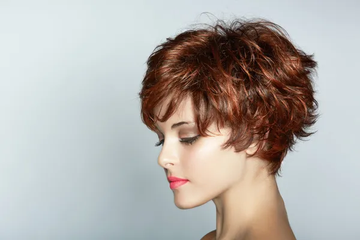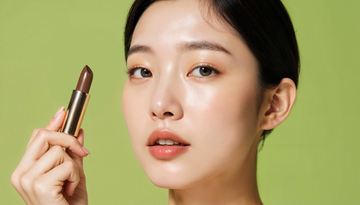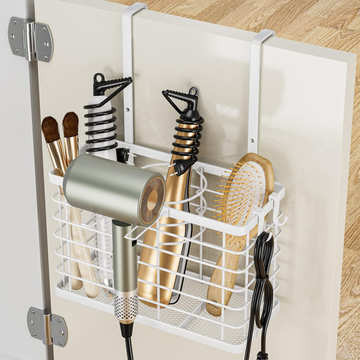Transform your blunt cut into a naturally soft style
Blunt haircuts can be bold, sleek, and incredibly chic—but they’re not always easy to love. For some, those sharp, straight edges might feel too harsh or heavy, leaving you wishing for a softer, more natural look. Whether your cut feels boxy, lacks movement, or just doesn’t flatter your face shape, the good news is that you don’t have to live with it.
With a few simple tweaks, you can transform that blunt chop into a style that feels lighter, more effortless, and perfectly tailored to you. From adding layers to using thinning techniques, there are plenty of ways to soften those edges and bring back the flow your hair deserves. By the end, you’ll have all the tips you need to make your blunt cut work for you.
Expert ways to fix a blunt haircut
If your blunt haircut isn’t living up to expectations, there’s no need to panic. Whether you want to soften those sharp lines or create more movement, these expert techniques will help you achieve a more flattering look.
Add layers for movement
Layers are the go-to solution for softening blunt cuts. By strategically cutting hair at different lengths, layers break up the uniformity of a blunt cut, giving your hair natural flow and dimension.
Why layers work:
– They introduce texture, making hair appear lighter and more dynamic.
– Layers frame the face, adding balance and softness.
– They work for all hair types: for thick hair, layers reduce bulk, while for fine hair, they create the illusion of more volume.
When to use layers:
– If your hair feels weighed down or lacks movement.
– If you want a style that’s more versatile and easier to manage.
Pro tip: Ask your stylist for “invisible layers” if you want a subtle change that blends seamlessly with the rest of your hair.
Use thinning shears to soften the ends
Thinning shears are perfect for reducing bulk without changing the length of your hair. These scissors remove small sections of hair with each snip, creating a softer, feathered effect.
Why thinning shears are a game-changer:
– They help thin out a blunt cut without making drastic changes.
– Perfect for thick or coarse hair that feels too heavy.
How it’s done:
A stylist can focus on the mid-lengths and ends, removing just enough bulk to give your hair a more natural flow. This technique is especially helpful for those who want to maintain the length but feel their blunt cut is too rigid or boxy.
Try point cutting for a softer finish
Point cutting is a precision technique that removes weight and adds texture. Instead of cutting straight across, the stylist makes small, angled snips into the ends of your hair.
Why point cutting works:
– It softens the appearance of blunt edges.
– Adds movement and texture without altering the overall shape.
Best for:
– Those who want a natural, lived-in look.
– People with wavy or curly hair who want to enhance their hair’s natural texture.
At-home alternative: If you’re confident with scissors, you can try light point cutting yourself—just be cautious and work in small sections.
Consider curtain bangs or face-framing layers
If your blunt cut feels too severe around your face, adding curtain bangs or face-framing layers can provide instant relief. These styles soften your features and create a seamless transition from your blunt cut to the rest of your hair.
Benefits of face-framing styles:
– They draw attention to your best features.
– Add softness and balance to your overall look.
Who should try this:
– Anyone looking for a subtle change without losing length.
– Ideal for heart-shaped or oval faces, but customizable for all face shapes.
Stylist tip: Face-framing layers can be tailored to your preferences, whether you want them subtle or dramatic.
Blunt undercut for added dimension
Here’s a twist for those who want to keep the boldness of a blunt cut but with a modern edge: the blunt undercut. This technique involves cutting the bottom layer of your hair slightly shorter than the top, creating a layered effect without visible layers.
Why this works:
– Adds dimension and movement without losing the structured feel of a blunt cut.
– Great for thick hair, as it reduces weight while maintaining a sleek finish.
Best for:
– Those who want to balance boldness with softness.
– Anyone curious about adding a subtle, unique twist to their haircut.

Styling tricks to make a blunt cut look softer
If you’re not ready to commit to cutting or thinning your hair, styling techniques can work wonders in transforming a blunt cut.
Add waves or curls
One of the easiest ways to soften a blunt haircut is by adding texture with waves or curls. This styling trick breaks up the straight lines and introduces natural movement.
How to do it:
– Use a curling iron or wand to create loose waves.
– Gently run your fingers through the curls to achieve a relaxed, beachy look
Use texturizing products
Texturizing sprays, mousses, and creams can help give your hair that effortless, piecey vibe. These products add grip and definition, making your hair look naturally tousled.
Best for:
– Adding texture to fine hair.
– Enhancing waves and curls in thicker hair.
Blow-dry with a round brush
For those who prefer straight styles, using a round brush while blow-drying can help create soft, voluminous ends. This technique lifts the hair at the roots and gently curves the ends, reducing the severity of blunt edges(just make sure you’re using a heat protectant spray beforehand).
Pro tip:
– Finish with a light hold hairspray to keep the style in place without sacrificing movement.
Embracing texture and volume with color techniques
While cutting techniques are key to softening a blunt haircut, color can also play a transformative role. Adding dimension through highlights, balayage, or lowlights helps create visual texture, breaking up harsh lines and giving the hair a softer, more dynamic appearance.
Balayage for natural depth
Balayage, a hand-painted highlighting technique, is perfect for those looking to add a sun-kissed, natural look to their blunt cut. By applying lighter tones throughout the hair, balayage creates the illusion of depth and movement.
Why it works:
– Adds subtle contrast, making blunt edges appear less severe.
– Works well with layers or face-framing styles for a cohesive look.
Who should try this:
– Ideal for those wanting low-maintenance color that grows out seamlessly.
Lowlights for added dimension
Lowlights involve adding darker shades to sections of the hair, which helps create contrast and visual interest. For blunt cuts, lowlights can make the hair appear fuller and more textured.
Why it works:
– Breaks up the monotony of a single-color blunt cut.
– Enhances volume and depth, especially in fine or flat hair.
Best for:
– Individuals with lighter hair colors looking to add richness and depth.
Face-framing highlights for softness
Face-framing highlights focus on adding lighter tones around the face, which softens harsh lines or larger foreheads and brightens your overall look. These highlights can blend seamlessly with curtain bangs or layers for a polished yet effortless vibe.
Why it works:
– Draws attention to your facial features while balancing the bluntness of the cut.
– Creates a subtle gradient effect that softens the transition between lengths.
Pro tip: Combine face-framing highlights with texturizing cuts for the ultimate blend of movement and softness.
When it’s time to visit a pro
Sometimes, despite your best efforts, your blunt cut may still feel off. Here are a few signs it’s time to book an appointment with a stylist:
– Your hair feels too bulky and impossible to style: If thinning shears or at-home layering attempts aren’t cutting it (literally), a stylist can expertly remove bulk without sacrificing the overall shape or length.
– The blunt cut isn’t blending well with your overall look: Sometimes a blunt cut can clash with your personal style, making it hard to feel confident. A stylist can help reshape the cut to better complement your features and aesthetic.
– You’re unsure how to safely thin out or layer your hair without overdoing it: DIY fixes can sometimes lead to uneven or choppy results. A professional can create seamless layers or texture that looks intentional and polished.
What a professional stylist can do
A skilled stylist knows how to balance structure and softness, ensuring your haircut flatters your face shape, hair texture, and personal style. They can get rid of a blunt cut entirely by reshaping it into a more dynamic, layered look. They can use precision techniques like point cutting, slide cutting, or razor cutting to add texture and movement. They can also suggest complementary styles, such as curtain bangs or face-framing layers, to blend the bluntness with the rest of your hair.
Tips for communicating with your stylist
Clear communication is key to getting the results you want. Here’s how to make sure you and your stylist are on the same page:
– Bring reference photos: Visual aids can be incredibly helpful. Whether it’s a celebrity’s haircut or an image from Pinterest, photos give your stylist a concrete idea of the look you’re aiming for.
– Be specific about the changes you want: Mention whether you’re looking to reduce bulk, add texture, or soften harsh lines. If there are certain techniques you’re open to (like layers or thinning), let your stylist know.
– Describe what you don’t want: Just as important as what you do want, explaining what you’d like to avoid—such as losing too much length—helps your stylist tailor their approach.
– Ask for their professional opinion: Stylists can offer valuable insights into what will work best for your hair type and face shape, often suggesting tweaks you may not have considered.
The beauty of bluntness
A blunt haircut may start as a bold statement, but it doesn’t have to stay that way if it’s not working for you. With a few expert techniques—whether it’s adding layers, softening ends with thinning shears, or incorporating face-framing styles—you can transform your cut into something that feels more natural and flattering.
Remember, there’s no one-size-fits-all solution. You might love the results from a simple DIY tweak, or you may decide it’s time to call in a pro for that perfect blend of structure and softness. Either way, the power is in your hands (and scissors) to make your haircut work for you.
Embrace the versatility of your hair and don’t be afraid to experiment—every cut is an opportunity to find a style that highlights your unique beauty. So, go ahead and soften those edges. Your hair is ready for its next transformation!





